Some health and fitness myths are frustratingly persistent. How many times have you heard that eggs are good for you, bad for you, and back again? Does creatine cause hair loss? For way too long, it was widely accepted that your knees shouldn’t go past your toes when you squat.
Luckily, most of these have been debunked. But the idea that fat loss and muscle growth cannot coexist at the same time persists. After all, an entire sect of the supplement industry centers around products designed to help you shed fat or bulk up, but not both.
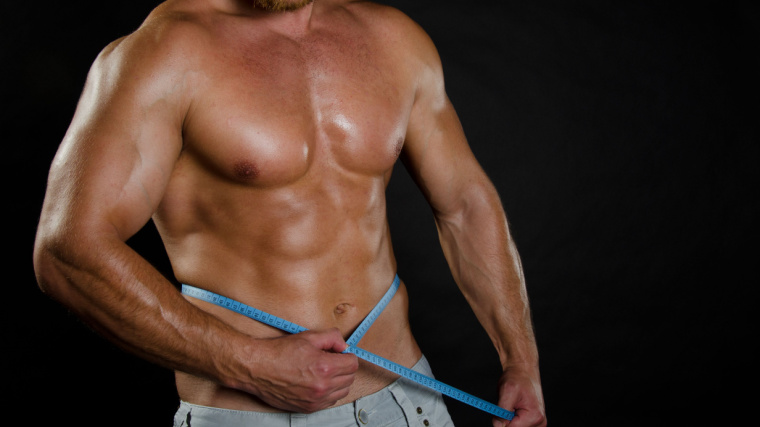
So, what’s the deal? Can you actually lose fat and gain muscle at the same time? The short answer is, well, yes. But the long — and more important — answer, unsurprisingly, has a lot of nuance to it. Here’s what you need to know.
Editor’s Note: The content on BarBend is meant to be informative in nature, but it should not be taken as medical advice. When starting a new training regimen and/or diet, it is always a good idea to consult with a trusted medical professional. We are not a medical resource. The opinions and articles on this site are not intended for use as diagnosis, prevention, and/or treatment of health problems. They are not substitutes for consulting a qualified medical professional.
How To Lose Fat
Before you dive too deeply into the biology, you need to understand that fat loss differs from weight loss. Weight loss refers to, well, reducing your scale weight. You can achieve this through shedding water, losing fat, muscle wasting, and so on.
Fat loss specifically means converting your body’s fat stores — called adipose tissue — into usable energy in the form of calories. For the scientifically inclined, this process is called fat oxidation.
Fat oxidation (and thus fat loss) occurs when you expend more energy on a regular basis than you consume. As in, you burn more calories than you eat or drink each day. This gap is called a calorie deficit. Sustain a calorie deficit long enough, and you’ll lose weight.
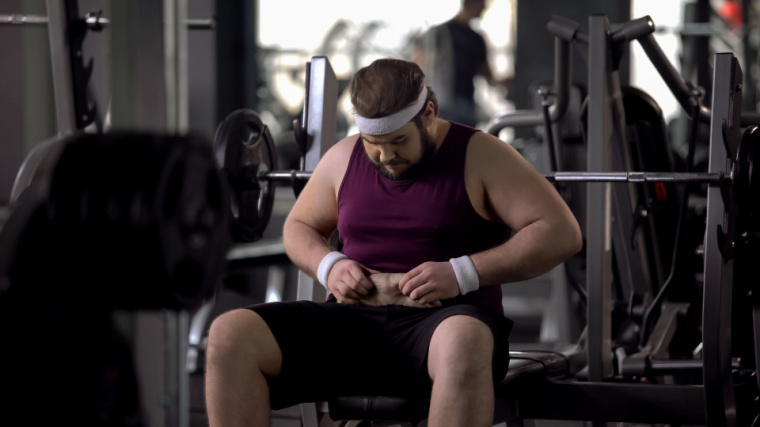
[Read More: The Best Healthy Fast Food Options at the Most Popular U.S. Chains]
Factors like the quality of your diet and what type of exercise you perform will determine how much of that weight loss comes from body fat versus other sources like muscle.
How To Gain Muscle
If a negative “energy balance” — as in, a calorie deficit — creates weight loss, then a positive energy balance creates weight gain. Eating more calories than you burn on a regular basis will increase your body weight.
And, just like with fat loss, habits unrelated to the quantity of your intake determine the quality of that weight gain. Muscle hypertrophy doesn’t just occur on its own. To encourage muscle growth, you need both a caloric surplus and an adequate amount of resistance training.
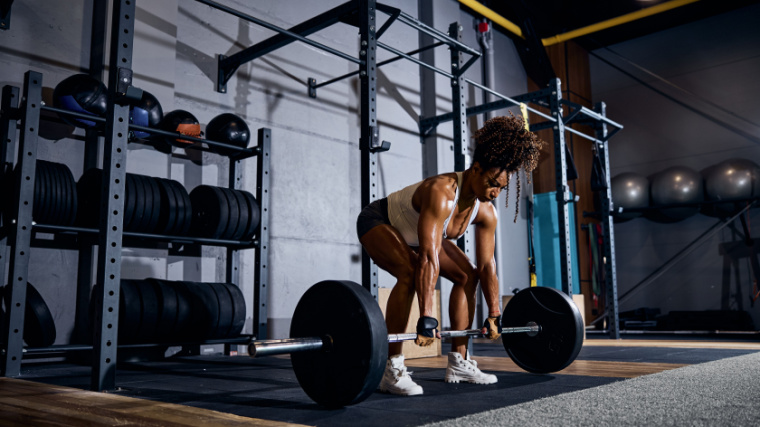
[Read More: The Definitive Guide to Bodybuilding Meal Prep]
If you consume a surplus of calories, lift weights on a regular basis, and eat heaping portions of dietary protein, you’ll gain weight. Some portion of that weight (ideally, the majority of it) will be new muscle tissue, but you’re liable to gain a bit of fat along the way as well in most cases.
Can You Lose Fat and Gain Muscle at the Same Time?
Here’s where things get interesting. If you need a deficit of calories to lose fat, and a surplus of calories to build muscle, how can you possibly accomplish both at the same time?
That’s the crux of the myth: That the two processes are diametrically opposed, and thus, cannot possibly coexist. While there’s a nugget of truth in there, modern scientific research is painting a very different picture. In the right circumstances, you can certainly lose fat and gain lean mass at the same time.
A review paper from 2020 studying body recomposition (the clinical term for altering your fat-to-muscle ratio) concluded that, “there is a substantial amount of literature demonstrating this body recomposition phenomenon in resistance-trained individuals.” (1)
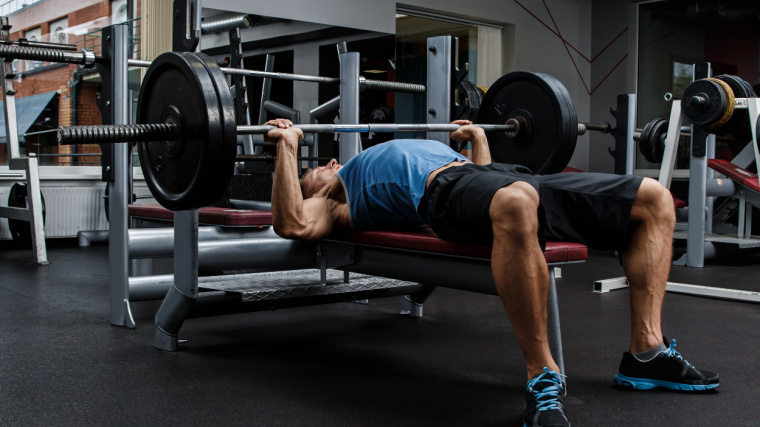
[Read More: The Best Ashwagandha Supplements For Sleep, Testosterone, And More]
Dramatic bodily changes, such as simultaneous fat loss and muscle gain, were previously thought to only be accessible to those brand new to health and fitness. As time has passed, more data have emerged demonstrating that true body recomposition occurs in both beginners and advanced athletes.
How To Do It
While it is possible to gain muscle and drop fat at the same time by adhering to the following principles, you should temper your expectations regardless. Body recomposition is a much, much slower process than dedicating yourself to a fat loss diet or muscle gain phase.
Nutrition
You can’t eat “more” and “less” at the same time, so you’ll have to pick between sustaining a caloric deficit or a surplus. Luckily, research seems to show that a caloric surplus is not strictly required for gaining muscle. (2)(6)
There’s also some limited data showing favorable body composition outcomes for subjects who placed a large share of their daily caloric intake right before and after workouts, and who ate a little more on days they hit the gym compared to when they rested. (3)
Further, very high dietary protein intakes (above 1-1.2 grams per pound of body weight) have substantial muscle-preserving effects, especially when a caloric deficit is present. (4)(5)
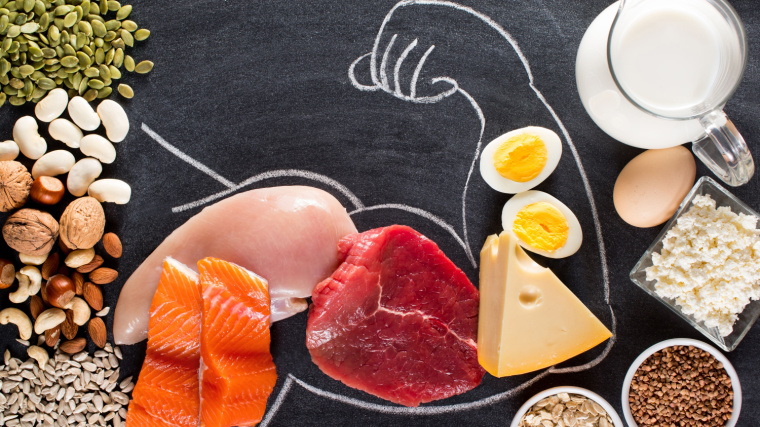
[Read More: The Complete Guide to Pre-Workout Supplements]
So, your major nutritional benchmarks if your goal is to build some muscle while losing fat should be:
- Be in a very mild caloric deficit overall, especially in the context of the week as a whole.
- Experiment with eating a bit more on days you work out and a bit less on rest days.
- Keep your protein intake very high at all times.
Training
No matter how much muscle you’re looking to build, you need to follow the rules of proper hypertrophy training. Chiefly, you need to apply a substantial amount of mechanical tension to your muscles during your workouts to induce growth. (7)(1)
That said, you don’t need to slam yourself against a wall in the gym six days per week. In fact, when it comes to body recomposition, taking a “less is more” approach may be wise. Two to four weekly sessions have been shown to be plentily effective. (8)
Research shows that, at least in a caloric surplus, training to failure isn’t necessary for muscle growth. (9) Doing so also increases your recovery demands. However, you will be working with limited calories, so it is probably wise to keep your training intensity quite high overall to ensure you’re applying enough of a stimulus.
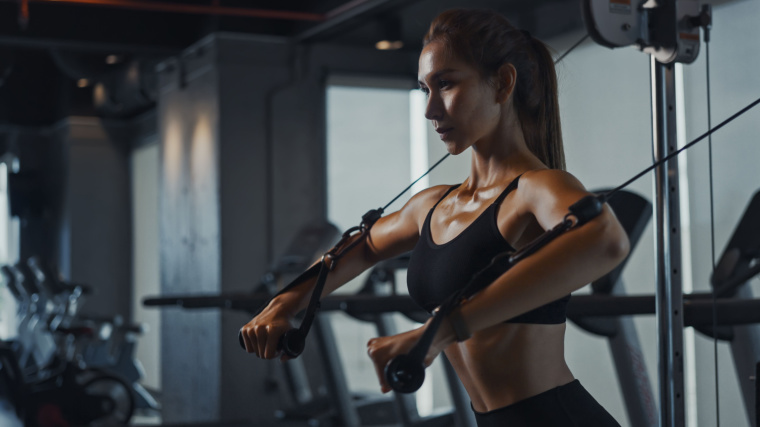
[Read More: The 12 Best Supplements for Muscle Growth]
Here are the main beats to hit regarding your exercise habits if your goal is to gain muscle while losing fat:
- Prioritize at least two high-quality, high-intensity strength training workouts each week.
- Consider limiting how much cardio you perform. Research shows that cardio, whether it is steady state or interval training like HIIT workouts, isn’t especially effective at burning fat. (10)
Supplementation
Certain supplements may have value when it comes to improving your body composition. Note that they won’t account for a large portion of your overall results, but that doesn’t mean they aren’t worth some consideration.
[Read More: How Much Protein Do You Actually Need Per Day?]
Essential amino acids (EAA) supplements have been shown to help slow muscle protein breakdown during periods of caloric restriction (11), meaning they can help you maintain the muscle you already have while losing fat.
Creatine has a veritable mountain of data behind it bolstering its efficacy for increasing strength as well as preserving and building muscle tissue. (12)(13) Some people do experience a bit of bloating or water retention when taking creatine, though, which can muddy weight monitoring data somewhat. (14)
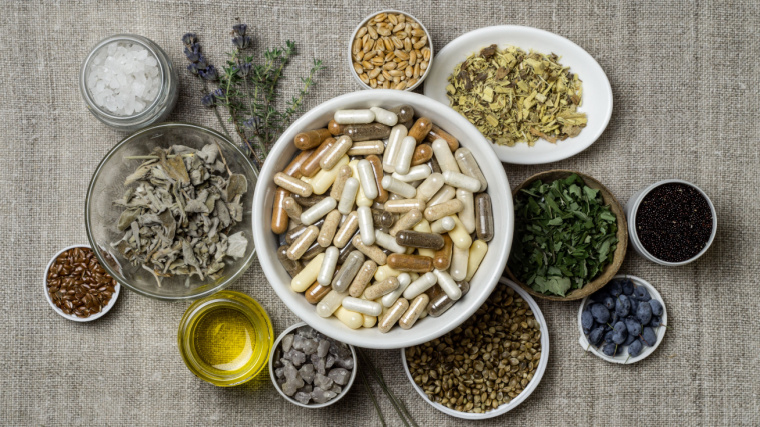
[Read More: 20 High-Fiber Foods to Support Digestion]
If you’re shopping for supplements to include on your body recomposition journey, consider:
- An EAA or BCAA product may be worthwhile if you want to help preserve your existing muscle tissue, though it may not be necessary if you’re consuming enough dietary protein from food.
- Creatine monohydrate is a solid pick for its performance and body-related benefits, but may affect the number you see on the scale for a period of time.
Your Takeaways
Losing fat while gaining muscle is certainly possible. There’s a debate to be had about its practicality, for sure, and it may not be feasible for all individuals in all situations. Understand that achieving two body composition goals at once is a slower, more arduous process than committing to a weight loss or weight gain phase.
But with the right diet, proper resistance training, a few choice supplements, and heaps of patience, you can undoubtedly add muscle mass and lose fat at the same time.
References
- Barakat, Christopher MS, ATC, CISSN1; Pearson, Jeremy MS1; Escalante, Guillermo DSc, MBA, ATC, CSCS, CISSN2; Campbell, Bill PhD, CSCS, FISSN3; De Souza, Eduardo O. PhD1. Body Recomposition: Can Trained Individuals Build Muscle and Lose Fat at the Same Time?. Strength and Conditioning Journal 42(5):p 7-21, October 2020.
- Slater, G. J., Dieter, B. P., Marsh, D. J., Helms, E. R., Shaw, G., & Iraki, J. (2019). Is an Energy Surplus Required to Maximize Skeletal Muscle Hypertrophy Associated With Resistance Training. Frontiers in nutrition, 6, 131.
- Cribb, P. J., & Hayes, A. (2006). Effects of supplement timing and resistance exercise on skeletal muscle hypertrophy. Medicine and science in sports and exercise, 38(11), 1918–1925.
- Longland, T. M., Oikawa, S. Y., Mitchell, C. J., Devries, M. C., & Phillips, S. M. (2016). Higher compared with lower dietary protein during an energy deficit combined with intense exercise promotes greater lean mass gain and fat mass loss: a randomized trial. The American journal of clinical nutrition, 103(3), 738–746.
- Antonio, J., Peacock, C.A., Ellerbroek, A. et al. The effects of consuming a high protein diet (4.4 g/kg/d) on body composition in resistance-trained individuals. J Int Soc Sports Nutr 11, 19 (2014).
- Garthe, I., Raastad, T., Refsnes, P. E., Koivisto, A., & Sundgot-Borgen, J. (2011). Effect of two different weight-loss rates on body composition and strength and power-related performance in elite athletes. International journal of sport nutrition and exercise metabolism, 21(2), 97–104.
- Schoenfeld B. J. (2010). The mechanisms of muscle hypertrophy and their application to resistance training. Journal of strength and conditioning research, 24(10), 2857–2872.
- Lopez, P., Taaffe, D. R., Galvão, D. A., Newton, R. U., Nonemacher, E. R., Wendt, V. M., Bassanesi, R. N., Turella, D. J. P., & Rech, A. (2022). Resistance training effectiveness on body composition and body weight outcomes in individuals with overweight and obesity across the lifespan: A systematic review and meta-analysis. Obesity reviews : an official journal of the International Association for the Study of Obesity, 23(5), e13428.
- Refalo, M.C., Helms, E.R., Trexler, E.T. et al. Influence of Resistance Training Proximity-to-Failure on Skeletal Muscle Hypertrophy: A Systematic Review with Meta-analysis. Sports Med 53, 649–665 (2023).
- Keating, S. E., Johnson, N. A., Mielke, G. I., & Coombes, J. S. (2017). A systematic review and meta-analysis of interval training versus moderate-intensity continuous training on body adiposity. Obesity reviews : an official journal of the International Association for the Study of Obesity, 18(8), 943–964.
- Gwin, J. A., Church, D. D., Hatch-McChesney, A., Howard, E. E., Carrigan, C. T., Murphy, N. E., Wilson, M. A., Margolis, L. M., Carbone, J. W., Wolfe, R. R., Ferrando, A. A., & Pasiakos, S. M. (2021). Effects of high versus standard essential amino acid intakes on whole-body protein turnover and mixed muscle protein synthesis during energy deficit: A randomized, crossover study. Clinical nutrition (Edinburgh, Scotland), 40(3), 767–777.
- Hall, M., Manetta, E., & Tupper, K. (2021). Creatine Supplementation: An Update. Current sports medicine reports, 20(7), 338–344.
- Delpino, F. M., Figueiredo, L. M., Forbes, S. C., Candow, D. G., & Santos, H. O. (2022). Influence of age, sex, and type of exercise on the efficacy of creatine supplementation on lean body mass: A systematic review and meta-analysis of randomized clinical trials. Nutrition (Burbank, Los Angeles County, Calif.), 103-104, 111791.
- Jose Antonio, Darren G. Candow, Scott C. Forbes, Bruno Gualano, Andrew R. Jagim, Richard B. Kreider, Eric S. Rawson, Abbie E. Smith-Ryan, Trisha A. VanDusseldorp, Darryn S. Willoughby & Tim N. Ziegenfuss (2021) Common questions and misconceptions about creatine supplementation: what does the scientific evidence really show?, Journal of the International Society of Sports Nutrition, 18:1
Featured Image: VladOrlov / Shutterstock
The post How To Lose Fat and Gain Muscle, According to Science appeared first on BarBend.
